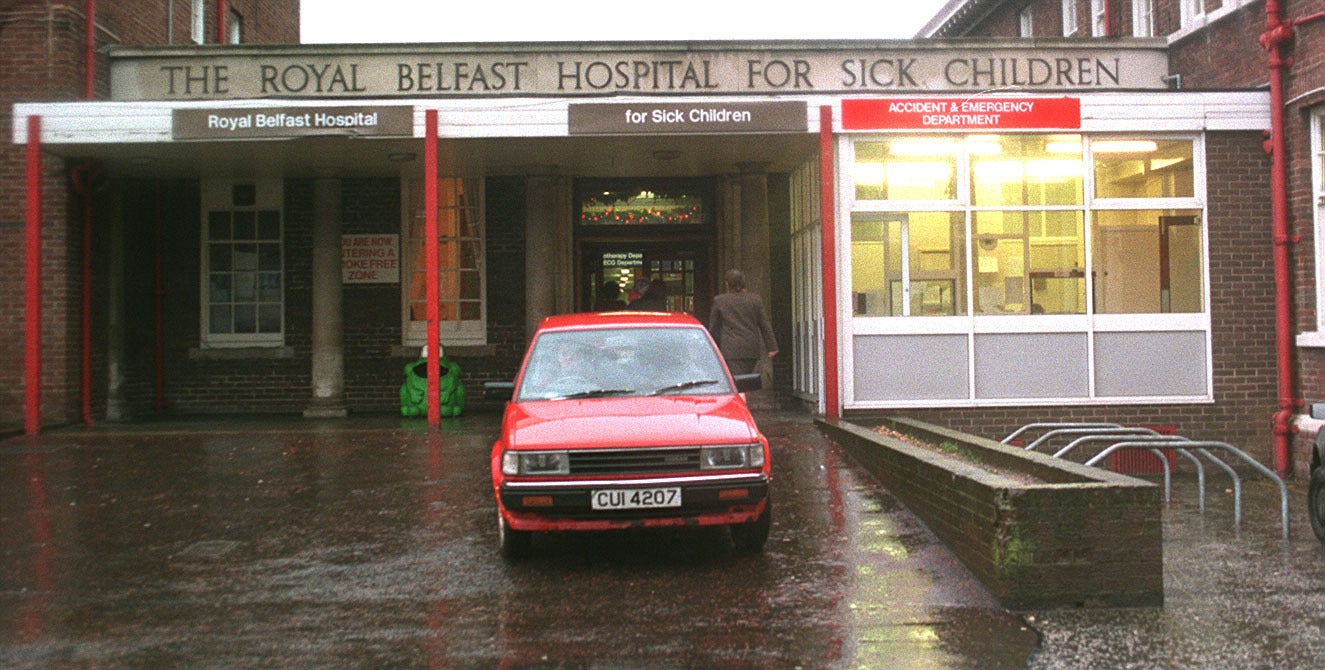Doctor ‘tried to cover up death of nine-year-old girl to avoid scrutiny’
In 1996, Dr Steen failed to pass on the death for coronial investigation.

Your support helps us to tell the story
From reproductive rights to climate change to Big Tech, The Independent is on the ground when the story is developing. Whether it's investigating the financials of Elon Musk's pro-Trump PAC or producing our latest documentary, 'The A Word', which shines a light on the American women fighting for reproductive rights, we know how important it is to parse out the facts from the messaging.
At such a critical moment in US history, we need reporters on the ground. Your donation allows us to keep sending journalists to speak to both sides of the story.
The Independent is trusted by Americans across the entire political spectrum. And unlike many other quality news outlets, we choose not to lock Americans out of our reporting and analysis with paywalls. We believe quality journalism should be available to everyone, paid for by those who can afford it.
Your support makes all the difference.A doctor tried to cover up the death of a nine-year-old girl to “avoid scrutiny” of failings in her care, a tribunal has heard.
Dr Heather Steen is said to have acted dishonestly in attempting to conceal the true circumstances of the death of Claire Roberts at the Royal Belfast Hospital for Sick Children in October 1996.
Claire’s parents, Alan and Jennifer, were told at the time a viral infection had spread from her stomach to her brain and that medics had done everything possible to save her.
But a television documentary, UTV’s When Hospitals Kill – broadcast in October 2004, raised concerns about the treatment of a number of children who had died from hyponatraemia, which occurs when there is a shortage of sodium in the bloodstream.
Tom Forster QC, opening the case for the General Medical Council (GMC), said a public inquiry into hyponatraemia-related deaths, including that of Claire, was subsequently announced.
After he watched the documentary, Mr Roberts also sought answers about his daughter’s care from the hospital who went on to refer the case to the coroner.
In 1996, Dr Steen failed to pass on the death for coronial investigation.
Mr Forster said: “The GMC’s case is that various procedural steps were taken by her in response to Claire’s unexpected and problematic death in which she set out to conceal what she knew about Claire’s death and the clear possibility there were failings in her care.
“In other words, a cover-up was attempted by Dr Steen to avoid scrutiny.”
He said her withholding of information was not just in the immediate aftermath of the death but also at a hospital meeting in 2004 with Mr and Mrs Roberts and when she allegedly gave inaccurate evidence at Claire’s inquest in May 2006.
The Medical Practitioners Tribunal Service (MPTS) hearing, sitting remotely, heard Claire was sent home from school on October 21 1996 with a note from her teaching explaining she felt pale and lethargic.
Claire went on to be sick two or three times at home before the family GP was called out and later referred her to hospital.
The first doctor at hospital to see her noted her speech was “very slurred” and she was “hardly talking”.
Mr and Mrs Roberts stayed with their daughter until she fell asleep at about 9pm and said they left with the impression she had a stomach bug, the tribunal heard.
Nursing staff went on to note that her sodium levels were outside the expected range as Claire vomited on several occasions throughout the night.
Her parents saw her again the next day and did not think she looked herself.
Claire’s levels of consciousness went on to decline and she suffered a five-minute seizure at 3.10pm, a one-minute episode of “clenching teeth and groaning” at 7.50pm and an episode of “screaming” at 9pm.
The hearing was told that a repeat blood test was not ordered earlier and consequently her fluid regime was not being assessed.
Mr Forster said: “At some point between 9:15pm and 10:30pm, Mr and Mrs Roberts decided to go home. They did so because concerns aboutClaire’s condition was not communicated to them.
“They were wholly unaware that their daughter was seriously ill.”
In the early hours of the next day, she stopped breathing and was transferred to the intensive care unit at 3.25am.
At 4am, Dr Steen, the on-call consultant paediatrician, saw Claire for the first time.
Mr Forster said: “By 4am Claire was in reality already dead. Plainly this was devastating news to her parents. It must have also come as a great shock to her nurses and doctors.
“When Dr Steen came into the ICU she must have been asking how this possibly could have happened, whether there were matters to be investigated and whether or not Claire’s death raised questions about the care she received.”
He said all she knew at that stage was Claire had suffered acute hyponatraemia which had been a contributory factor to the swelling of her brain.
However, he said, later the same day she inappropriately completed a medical certificate of cause of death without reference to a confirmed diagnosis of the condition.
Mr Forster said Dr Steen had conceded in her evidence to the hyponatraemia public inquiry there were failings in her care and she ought to have done things differently.
But her case was that recognition was with the benefit of hindsight and she did not take part in a cover-up and did not act dishonestly.
The hearing continues.
The hyponatraemia public inquiry concluded in 2018 that Claire’s death was the result of “negligent care” from an overdose of fluids and medication.
A fresh inquest in 2019 ruled her death was “caused by the treatment she received in hospital”.